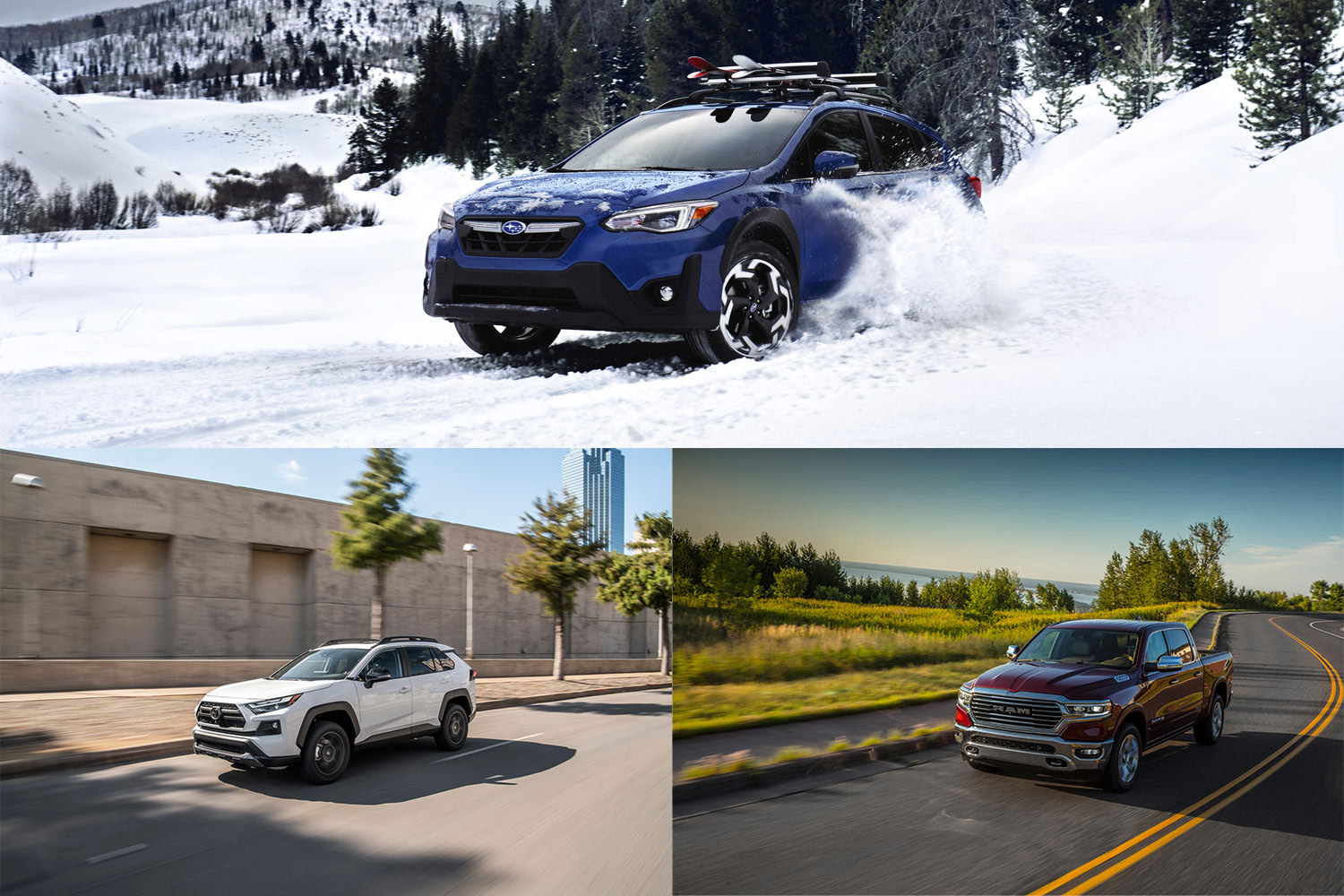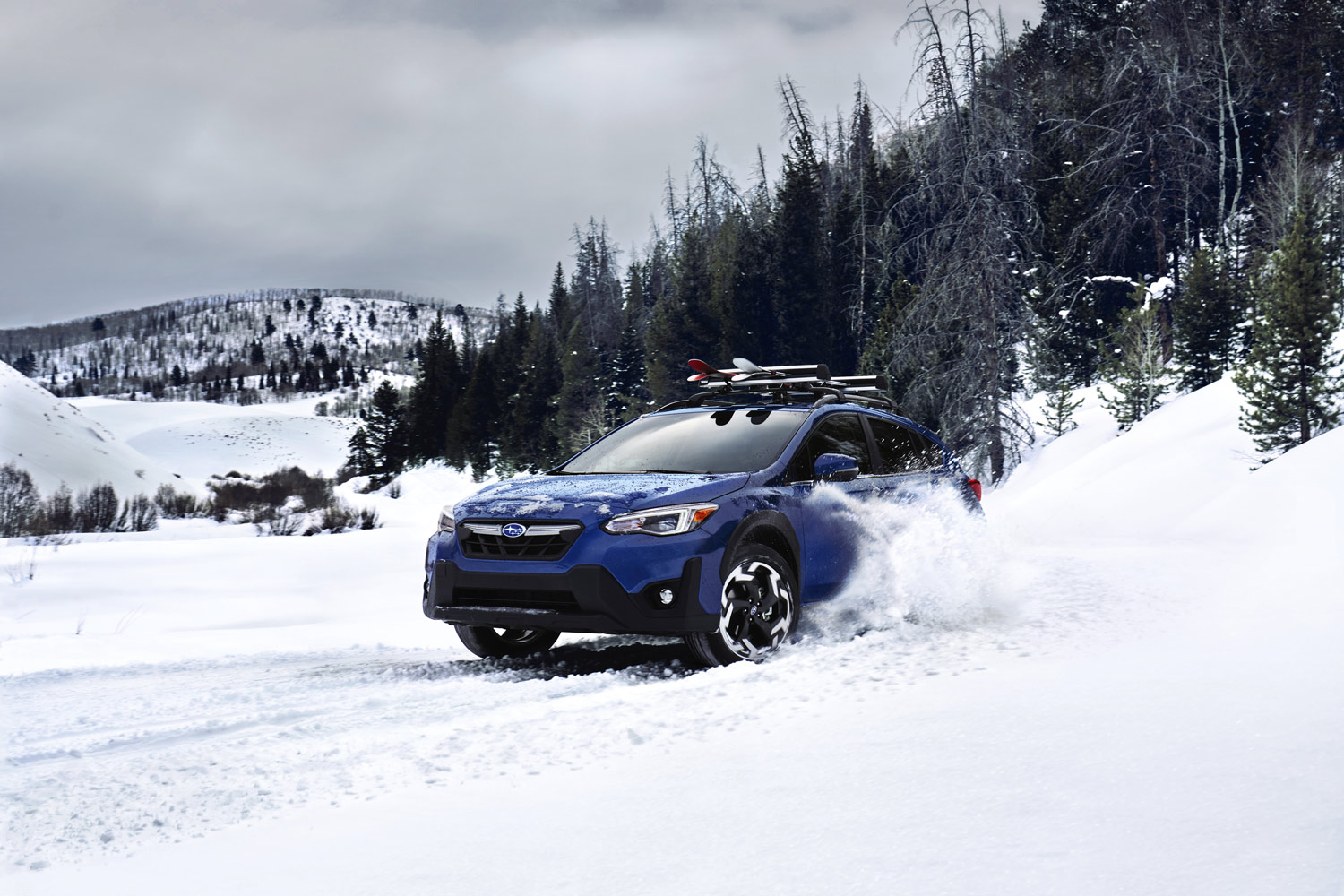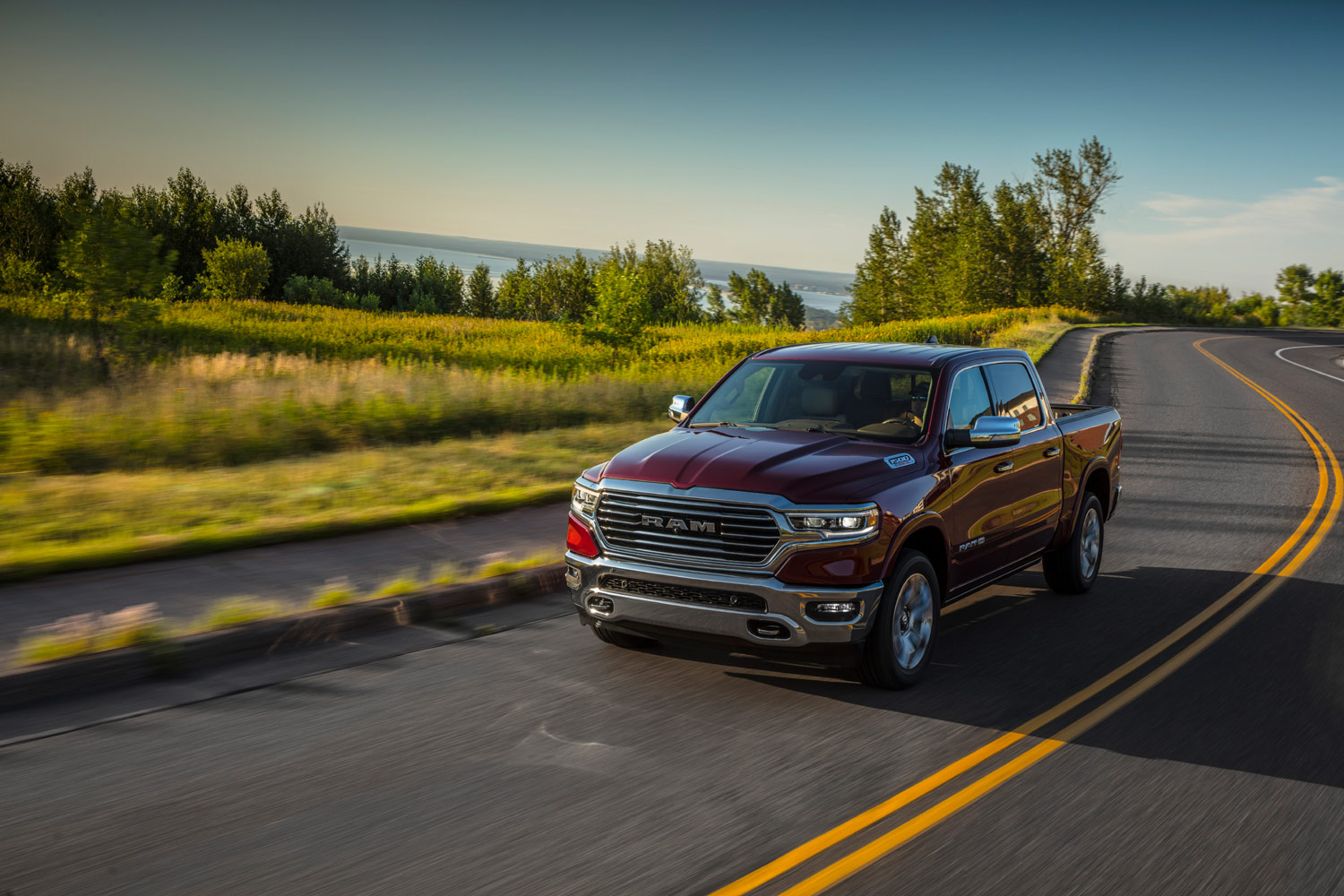Winter Driving: All-Wheel Drive vs. Front-Wheel Drive vs. Rear-Wheel Drive
Does the drivetrain make a difference when the snow falls?
 Subaru | Toyota | Ram
Subaru | Toyota | Ram
We’ve all seen them, those TV commercials showing an SUV plowing through snow with remarkable ease as a voiceover announces the model’s winter-beating, all-wheel-drive system. That marketing—while a bit hyperbolic—is no doubt effective. A vehicle that promises to take some dread out of winter driving is enticing to consumers. In fact, four- and all-wheel-drive vehicles now account for more than half of new-model sales in the U.S. Yet in an age when every new vehicle has electronic stability and traction control, is AWD really so superior to rear- and front-wheel drive when the roads turn icy and the snow starts to fly? Here’s what you should know.
 Subaru
Subaru
All-Wheel Drive
More and more models are coming standard with all-wheel drive, like the Subaru Crosstrek pictured. It’s similar to four-wheel drive, in that both systems can apply torque to each corner of the vehicle, but an AWD vehicle does it with no action from the driver. Some AWD vehicles provide automatic torque vectoring—that is, they can selectively power different wheels to maximize traction, a definite help in some winter driving situations. But while all-wheel drive is a boon to traction and, thus, acceleration, it makes less of a difference when braking or cornering in the snow. For sure-footed motoring on icy roads, winter tires are key, regardless of which drivetrain your vehicle has.
 Toyota
Toyota
Front-Wheel Drive
In a front-wheel-drive vehicle, the transmission directs the engine’s torque exclusively to the front axle. The majority of modern crossovers—the darlings of the U.S. market, like the best-selling Toyota RAV4 pictured—along with plenty of passenger cars are based on FWD platforms (though many FWD-based models come standard with AWD or offer it as an option).
All front-drive vehicles situate the engine ahead of the passenger compartment, making the front of the vehicle heavier than the rear. This arrangement—having weight over the drive wheels—aids traction. That said, if an FWD vehicle ends up nose-first into a snowbank, it may struggle to free itself, as the rear wheels will offer no power assistance.
On the plus side, FWD cars often cost less and are more fuel-efficient than their AWD counterparts. Unless you’re planning to trek through deep snow, an FWD vehicle on winter tires should get you through the colder months just fine.
 Ram
Ram
Rear-Wheel Drive
Rear-wheel drive—where only the rear wheels receive torque—dominated the automotive landscape in America until the 1980s, when FWD proliferated. Most traditional “full-size” pickup trucks on the market—like the 2023 Ram 1500 pictured—as well as some luxury and performance models are rear-drivers, and in most cases, they’re front-engine, too. Though 4WD is available on most of them, about a quarter of all new truck sales come with the standard RWD. In such a setup, the powered wheels sit under the lighter half of the vehicle, truck or not. This makes it easy for the rear tires to slip when accelerating in snow, although traction control is a valuable assistant in these situations—as, too, are winter tires.
Written by humans.
Edited by humans.
 Jim Koscs
Jim KoscsJim Koscs has been writing about cars for more than 30 years, his byline appearing in national enthusiast and trade publications, newspapers, and websites. He covers a broad spectrum of topics in automotive business, culture, collecting, design, history, racing, and technology. The "car thing" goes way back for Jim. At the 1968 New York Auto Show, he snuck away from his father to get a better look at a Rolls-Royce... from underneath it, to see if it had dual exhausts. (It didn't.)
Related articles
View more related articles